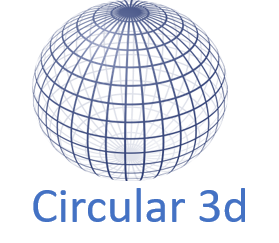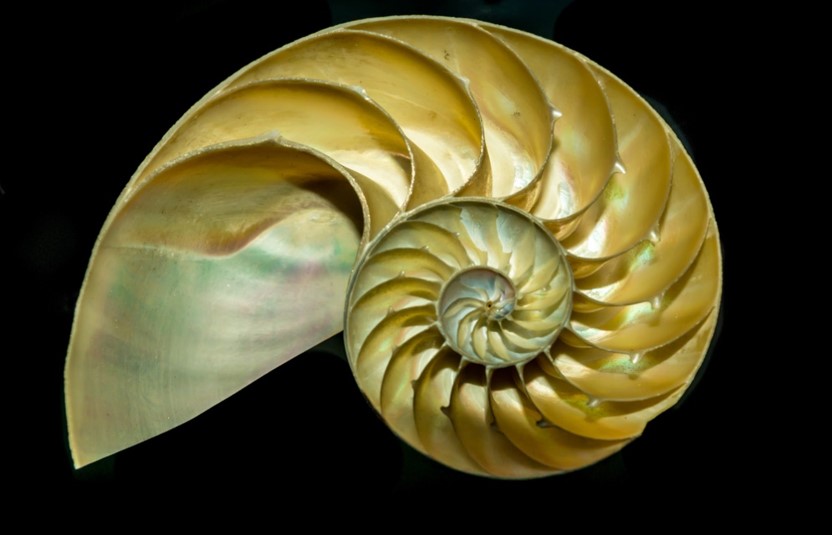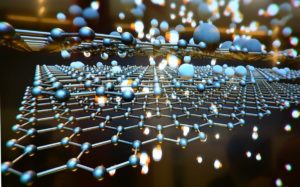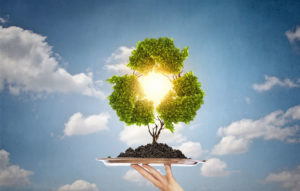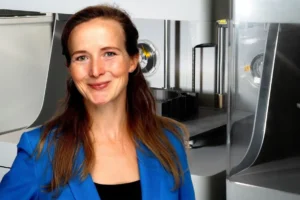The circular concept is defined by principles that design out of waste and keep materials and products in use as well as regenerating natural systems.
It replaces the end-of-life concept with restoration, shifts towards the use of renewable energy, eliminates the use of toxic chemicals and aims for the elimination of waste through the superior design of materials, products, systems and business models.
Nothing that is made in a circular economy becomes waste. Materials are categorized as either “biological nutrients” or “technical nutrients”. Biological nutrients are biodegradable and will easily reenter water and soil whereas technical nutrients will continually to circulate as pure and valuable materials within closed-loop industrial cycles.
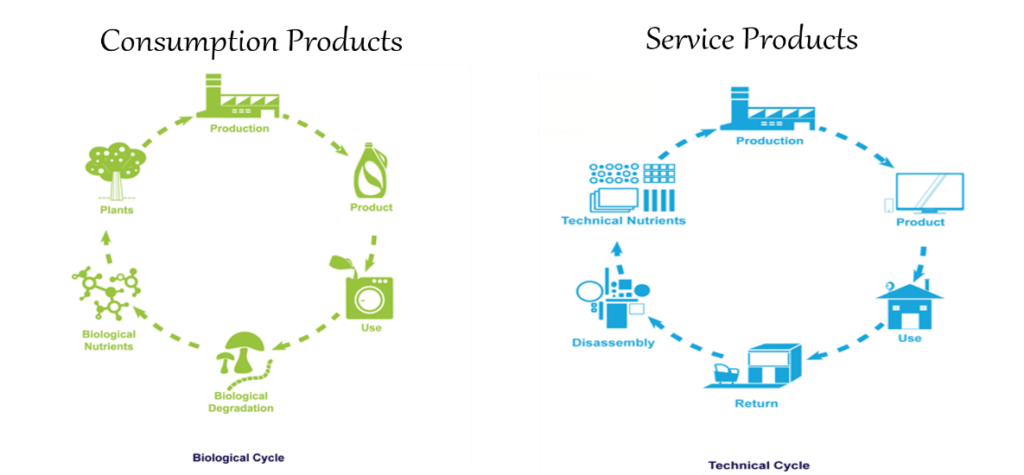
Circularity is a huge business opportunity. It is estimated that alone in the next 10 years, it could generate a value of 4.5 trillion dollar. It represents a systemic shift that builds long-term resilience, generates business and economic opportunities, and provides environmental and societal benefits.
But how do we get from our mainly linear, make, take, waste model to a circular model where we reuse, recycle and almost not creating any waste? Well we have a role model, this role model is 3.8 billion years old and is called nature.
Nature as a Role Model
Nature has been dealing with dynamic change and complexity for over 3.8 billion years, and the more we reconnect with nature, the more we open ourselves up to the wisdom that lies all around us.
In nature, there is no concept of waste. Everything is food for something other, a leaf that falls from a tree feeds the forest.
Nature’s model is very efficient but simple: Plants provide food for animals, when animals die they provide food for their decomposers. Animals tissue is decomposed into soil nutrients, soil nutrients serve as food for plants and the circle continues. The sun is supporting this circular system.

Recycling becomes so easy for nature because it mainly uses only four elements. Carbon, hydrogen, oxygen and nitrogen. Add a little sulfur and phosphorus, and you can account for 98% of the weight of every living thing on the planet.
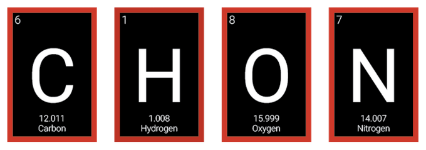
An igel or any other living organism can be broken down and can be turned into any other organismen, a flower, a snail or again into an igel. Nature manufactures all its products using an incredibly small amount of fundamental and, by necessity, nontoxic materials.
But the simple selection doesn’t limit nature‘s complexity and strength. Because nature adds functionality to matter, it adds structure to matter. And it does this by following an additive manufacturing process, life is build to shape.
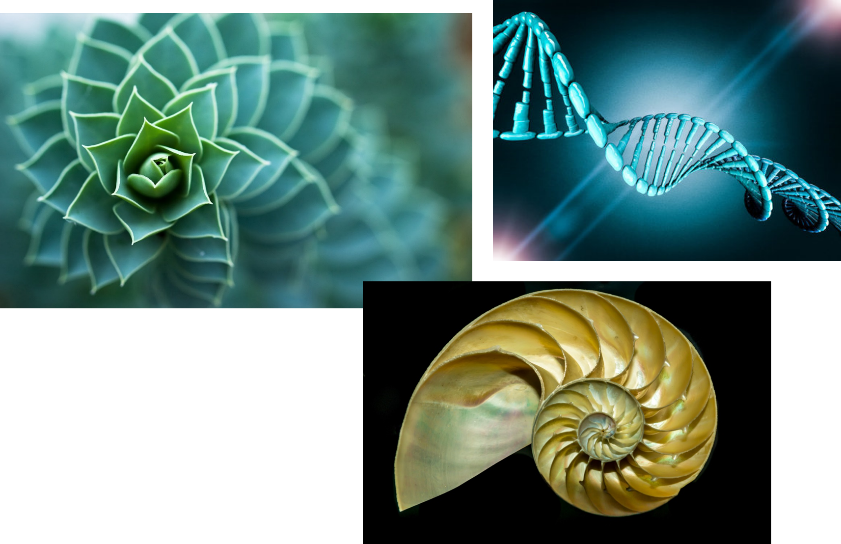
One example for an organism with very strong elements is the abalone. Abalones are made of 95 percent chalk, a material that is brittle and easy to break. The other 5 percent of the material is made up of more than 30 proteins. But from these very humble materials, nature formed something a lot tougher by structuring the individual components in a way that outperforms its individual constituents.
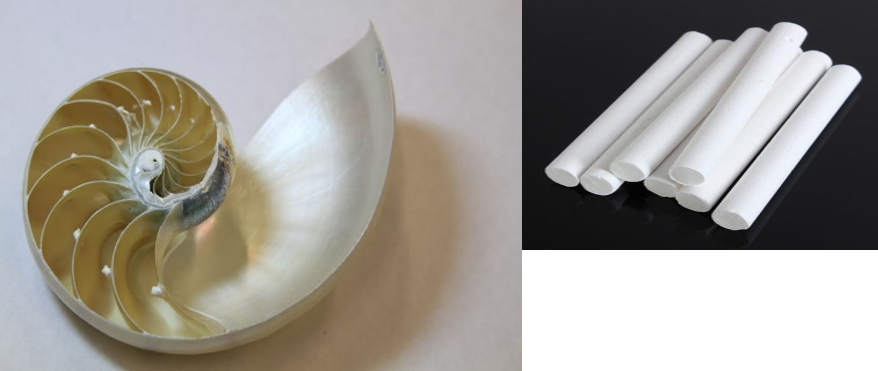
That is the key of natural materials, the development of synergies between components that separately are quite irrelevant. Bricks are shaped in a very peculiar way: they are wavy.
Nature’s simple palette results in products far more advanced than those produced by human industrial science. Seashells that are twice as tough as science’s best ceramics. Spiders can spin silk that is stronger than steel yet light enough to float on the wind. Human engineering is much more complex and that makes recycling so difficult. For a phone we are using 300 various polymers.
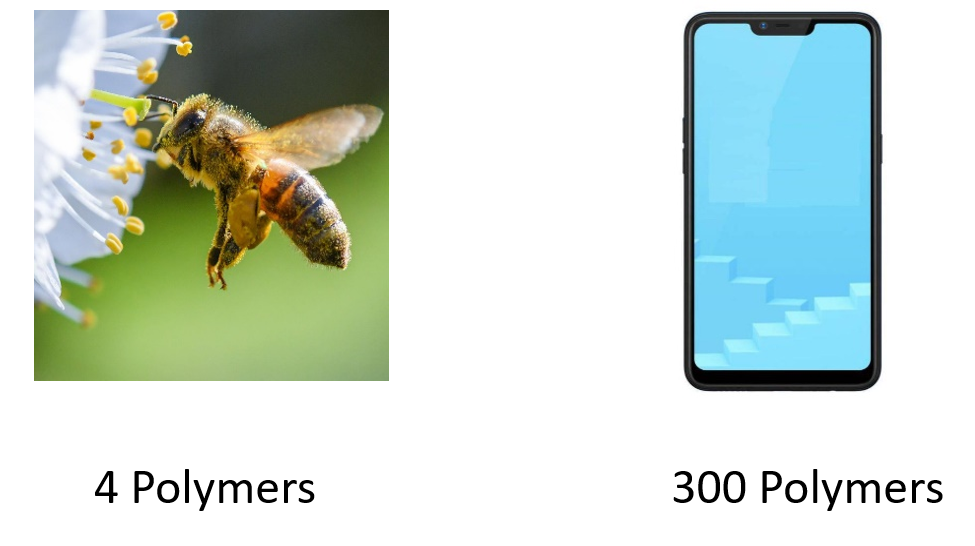
A bee is made out of only the four polymers but still manages to do complex tasks like flying, pollinating flowers and producing honey. Its simplicity doesn’t limit its variety and complexity.
Surrounded by the same complexity and beauty of nature, 2400 years ago, already Aristotle’s knew: The more perfect a nature is, the fewer means it requires for its operation.
In the second part of the Circular Economy Model it will be explained how we humans can create products with simple materials, yet achieving complex products that are easy to recycle.
